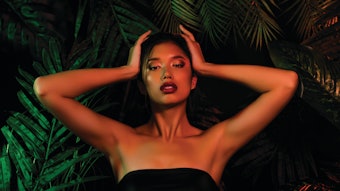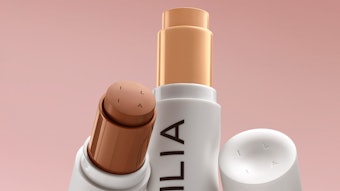An analyst insight blog post from Euromonitor International's Ashma Kunde, apparel analyst with the market research company, targets the continuing links between apparel and beauty trends. In "From the Closet to the Dressing Table: Apparel Brands Enter the Colour Cosmetics Fray," Kunde writes, "Vintage logo t-shirts and lumberjack shirts, and, now, lipsticks; apparel retailer Superdry plans to shake up its consumers’ makeup bags with a premium beauty range, set to launch globally in February 2014. This initiative, along with the growing success of fellow British brand Topshop, illustrates how apparel brands are looking to beauty for growth opportunities.
"Diversifying into color cosmetics is no novel strategy for apparel brands; the category is considered a natural extension to clothing due to its evident association with fashion. Traditionally adopted by luxury fashion houses to bring their brands to the masses without losing their exclusivity, now an increasing number of high street labels are developing their positions in this category. The relatively affordable nature of beauty, even at the premium end of the market, makes it an alluring shield for apparel brands against the ongoing discounting environment in Western Europe and North America. But with a plethora of pure beauty brands already competing in the category, where can apparel brands look for success?
"The success of young fashion brand Topshop provides a valuable case study to illustrate the potential for apparel brands in color cosmetics. First launched back in 2009, Topshop Make-Up now holds stand-alone appeal and is stocked in department stores Selfridges and John Lewis. The Topshop story illustrates how a fast fashion business model can be developed alongside a profitable beauty line. While a fashion trend can hit the shop floors within a matter of weeks, developing beauty products can take 1-2 years, providing a stark contrast to increasing speed of the fashion cycle.
"At the heart of its success lies investment. While many of Topshop’s contemporaries, including fast fashion brands Forever 21 and H&M, offer makeup items, these products serve as fripperies stocked by the cash tills to encourage impulse purchasing while queuing, rather than large-scale sales generators.
"Topshop, on the other hand, dedicates a significant amount of store space to displaying its range. It produces seasonal ranges and invests in strong advertising campaigns, akin to any other bona fide color cosmetics brand. Its quirky polka dot packaging and bright hues are in line with its target market of young fashionistas. Topshop also exemplifies the importance of style equating substance. Consumers have bought the product on account of its high-quality formulation at affordable prices. It has coupled this with the introduction of ‘Beauty Rooms’ in its Oxford Street flagship store, which offer beauty services including eyebrow threading, manicures and blow-dries, further emphasising its commitment to the beauty business.
"But will a brand like Superdry be able to replicate Topshop’s success, given it doesn't cultivate the same fashion-forward image?
"Unlike Topshop, which entered the market with an entire range of products, Superdry first dipped its toes into beauty in 2011 with a nail polish collection based on its best-selling t-shirts, as part of its larger aim of improving its position in womenswear. Bottling up the colors and replicating their motifs was a clever idea, which leveraged the brand’s comparative advantage in casual clothing. The neon hues and craft card packaging of its new all-encompassing line, which includes eye shadows, lip glazes, and tweezers, takes on the same guise.
"This highlights another key consideration for apparel brands wishing to target color cosmetics: the importance of correct product selection. Nail polish is a popular choice within color cosmetics, and rightly so. It was a star category performer over 2006–2011, fueled by growth in North America, the U.K., Germany and France, and is expected to continue to perform well. While consumers may shy away from bright colors and bold patterns when it comes to their clothing choices, they are more than comfortable to use their nails as a medium for experimentation. With the growing popularity of nail art and the penetration of new formats, innovation in the nail polish category clearly opens up a wealth of opportunities for apparel brands. Topshop itself offers nail art pens and crackle top coats, and it will launch ‘peel off’ nails as part of its Spring/Summer 2013 collection, with nail products already one of its best performing beauty areas.
"While existing brand equity in fashion will aid a move into beauty, it does not guarantee sustained success. As Topshop and Superdry illustrate, investment in products and marketing, as well as correct product selection, will significantly improve prospects.
"Additionally, while the odds are in favor of color cosmetics, apparel brands should not dismiss other beauty categories. For example, preppy label Abercrombie & Fitch has skipped color cosmetics to focus entirely on fragrances, which are more in sync with the brand’s heavily perfumed stores and bare-faced models. Lingerie market leader Victoria’s Secret has also transferred its ultra-feminine image to fragrances, bath and shower and body care products.
"Regardless of the direction a brand chooses to take, whether through launching its own product ranges, stocking third-party brands, or offering in-store services, it is evident that apparel will continue latching onto beauty’s recession-proof nature to weather the economic storm," Kunde concludes.









